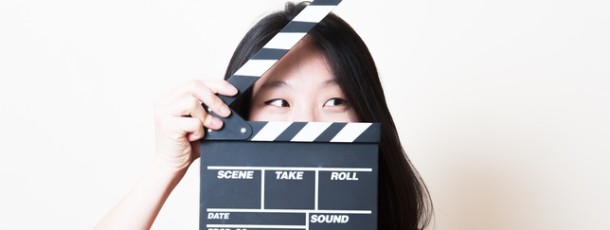8 Tips to Make Your Self-Taped Audition Look Its Best by Mae Ross
Great self-taped auditions are like talking headshots. Casting directors do not get to see how you take a note or respond on video like they do in a live audition, however, they do get a better sense of your movement, sound, and type with a video recording than they can with a still image. The first tips on how to get great self-taped audition videos involve making sure you can be seen, heard, and are the most interesting thing in your video recording.
As with any audition, you need to do your homework and prepare. Dust off your slate and take your audition piece to your acting class to practice. Grab some time with your acting coach. Practice on your own, for friends, for or family. However you prepare, for good self-taped auditions it’s really important to have at least one opportunity to perform the scene in front of others who can give you valuable feedback. Additionally, for great self-taped auditions, you need to prepare to shoot, which means making sure you have recording equipment, an appropriate setting, and a line reader. You want your face and body to get all the attention in your self-taped audition video.
Recording equipment. For self-taped auditions, casting directors welcome quality recordings from any source that offers fairly accurate color, detectable sound, and decent focus. If your phone records video, you’re probably set for recording equipment. Not only is HD unnecessary for a good self-taped audition, HD can be sometimes unforgiving in its hyper-detail. Whatever camera equipment you’re using, do your best to maximize the quality of your audition by recording at a quiet time with enough light to get good resolution for clear sound and image.
Lighting. Be aware of the color of light you’re in as well. If you know how to color balance, be sure to do that before you record. If not, keep in mind that most lights affect color and fluorescent light especially will give you a greenish or grey hue.
Be aware of the light you’re shooting with. Severe or high contrast lighting can cast hard shadows on you and overhead light can be unflattering. If you’re in a room with overhead light, try shooting closer to an open window to add some natural light. Placing a lamp or two nearby is another way to add “fill” or soften light to reduce stark shadows and keep the attention on you.
Wardrobe. Just like with getting good headshots, you want to make wardrobe and setting decisions that keep the attention on you in a positive way. Select simple wardrobe avoiding logos, busy patterns, white, and black (Black is a great fashion basic, but for headshots or auditions, black can create a distracting “floating head” effect, especially if your background is also dark.) Our eyes are naturally drawn to the brightest part of an image. You want casting directors looking at your face and eyes instead of your bright white shirt or bright white background.
Setting. Casting wants to see you in your self-taped audition videos, so don’t waste a second on creating a set or setting to fit the scene. However, do make sure your camera isn’t catching a bunch of distractions. Good self-taped auditions have simple, plain backgrounds. Hanging a colored sheet behind you is better for your self-taped audition than shooting with a cluttered or distracting background.
Frame. The “frame” is what the camera sees and where it cuts you off. Unless otherwise instructed for the audition, keep your frame medium to close-up, closing on your head and shoulders. Your line reader should be off-camera and not seen at all. Even if someone is running the camera for you, keep the shot simple, set the frame, and leave it there or allow for one gentle push-in to get a little closer as the scene progresses. Remember, you want the casting director paying attention to you and your performance, not what the camera is doing.
Performance. Just like in a live audition, unless directed to do so, don’t address the camera directly. Also called “breaking the fourth wall,” looking into camera can distract from your performance. Pick a focal point just off-camera. Since you’re shooting yourself, you can even place a sticker on the camera a smidgen to the left or right to keep your focus out of the lens.
Reader. Unless your self-taped audition is a monologue, you’ll need someone to read the other lines in the scene. It’s a good idea if that Reader knows what he or she is doing, so consider asking your acting coach or a fellow actor to be your reader. A good reader acts enough in a scene to prompt your performance but in a muted way to keep the viewer’s attention on you.
Test run. Shoot a quick test and watch it back reviewing all seven tips: recording equipment, lighting, wardrobe, setting, frame, performance, and reader. Make sure you can easily see and hear yourself clearly on the recording. It’s helpful if your reader can play double duty by starting and stopping the recording and checking your frame.
Now you’re ready to shoot! Do your best, follow the submission instructions to the letter, and keep your competitive edge with these simple steps for great self-taped audition videos!
